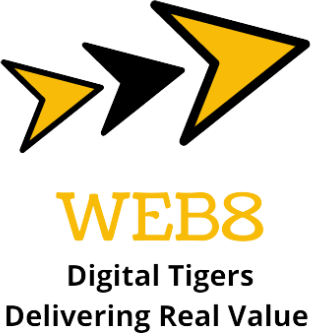Search Engine Optimization (SEO) is the process of optimizing a website for Google’s search algorithm, with technical SEO having a huge impact on a site’s crawl ability, user experience, and CTR (click-through rate). The goal of SEO is to rank higher in Google’s search results for relevant keywords. The only problem is, Google’s algorithm is constantly evolving, with updates and tweaks occurring up to 600 times a year. Google is constantly searching for new ways to improve its search results. This means that as Google’s algorithm continues to change, it becomes a challenging task for SEO professionals to adapt their strategies accordingly. With 2023 around the corner, here are a few SEO trends that you should keep your eye on in the new year.
1. Use semantically related keywords
By linking relevant similar keywords, we can expand on the subject that the reader is already interested in, and have all the information in one convenient location. Giving more of a contextual background on a subject is a great way of providing more value to the reader. To achieve this, you’ll need to focus mainly on the user intent.
There are four major categories for user intent:
-
- Navigational – Usually when a person types in a business name or website as this refers to when someone is trying to visit a specific website online.
- Informational – These searches are done to find an answer to a specific question, or to find information about a certain topic.
- Transactional – This occurs when someone is looking to make an online purchase.
- Commercial – When people have the intention to make a purchase, but need more time or want to make an informed decision.
2. Keyword research
 We all know what keywords are but how do we research the right keywords for our business? Like everything, this is changing. We used to look to rank #1 as the primary goal. Now as SERPS become increasingly inundated these results can be taken over by advertising and snippets. SO we need to change how we optimise keywords to a SERP marketing focus.
We all know what keywords are but how do we research the right keywords for our business? Like everything, this is changing. We used to look to rank #1 as the primary goal. Now as SERPS become increasingly inundated these results can be taken over by advertising and snippets. SO we need to change how we optimise keywords to a SERP marketing focus.-
- Consider the keywords used by your competitors (try tools like Semrush, and Ubersuggest)
- Repurpose older content to be more relevant to today
- Target keywords with less competition and moderate search volumes
3. The Rise of Voice
 cannot be underestimated as they have only been increasing in recent years. Smart speakers also started as a novelty when they first appeared on the market, typically used to answer basic and sometimes silly questions. Now, with new appliances such as Google Home, Amazon Echo, and the Apple HomePod, it seems to be a rising trend that is predicted to become the main search method in years to come. Today I asked Alexa to find me pizza, add my shopping list and find a hotel for the weekend.
cannot be underestimated as they have only been increasing in recent years. Smart speakers also started as a novelty when they first appeared on the market, typically used to answer basic and sometimes silly questions. Now, with new appliances such as Google Home, Amazon Echo, and the Apple HomePod, it seems to be a rising trend that is predicted to become the main search method in years to come. Today I asked Alexa to find me pizza, add my shopping list and find a hotel for the weekend.-
- Optimise for mobile searches (An estimated 27% of people around the world are now conducting voice searches on mobiles)
- Create an FAQ section on your site
- Target conversational keywords
- Build a Google My Business Profile
4. Optimise images for SEO
 engagement and therefore increasing the chances of a lead or sale. However, as the resolution of images improves, the larger the files become, slowing down the server’s loading speed.The benefits of optimizing your images include faster loading speed, improved SEO rankings, and increased website traffic. According to Unbounce, 70% of consumers admit that page speed impacts their willingness to buy from an online store. This makes image optimization a crucial step in web design and improving user experience.
engagement and therefore increasing the chances of a lead or sale. However, as the resolution of images improves, the larger the files become, slowing down the server’s loading speed.The benefits of optimizing your images include faster loading speed, improved SEO rankings, and increased website traffic. According to Unbounce, 70% of consumers admit that page speed impacts their willingness to buy from an online store. This makes image optimization a crucial step in web design and improving user experience.-
- Utilise alt text, descriptions and captions, these help you images being seen by the crawlers
- Compress images before uploading
- Rename images according to relevant keywords
- Consider your image format use the best image for the job






